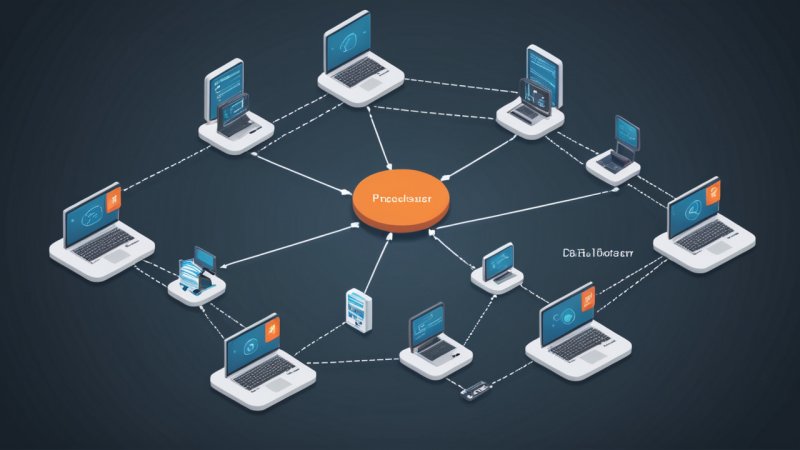In the rapidly evolving landscape of network protocols, Remote Procedure Calls (RPC) stand out as a pivotal mechanism that allows for seamless communication between distributed systems. By enabling programs to execute procedures on a remote server as if they were local calls, RPC abstracts the complexities of the network, making it an invaluable tool in modern software architecture. As applications become more decentralized and reliant on service-oriented architectures, understanding the intricacies of RPC becomes essential for developers and system architects alike. This article delves into the fundamental principles of RPC, its various implementations, challenges, and real-world applications, providing a comprehensive guide to this vital technology.
Understanding Remote Procedure Calls
At its core, an RPC is a protocol that one program can use to request a service from a program located on another computer in a network. The main advantage of using RPC is the simplification of the process of executing functions across networks, allowing developers to focus on the business logic rather than the underlying communication mechanisms. RPC operates by using a client-server architecture, where the client sends a request to the server, which then processes the request and sends a response back to the client.
The Mechanism Behind RPC
RPC operates through a series of steps that include:
- Client Stub: The client program calls a procedure that appears to be local but is actually executed remotely. This is facilitated by a client stub, which acts as a proxy for the remote procedure call.
- Marshalling: Before the request is sent over the network, the client stub marshals the parameters of the procedure call into a format suitable for transmission.
- Transport: The marshalled data is sent over the network to the server using a transport protocol, commonly TCP.
- Server Stub: Upon receiving the request, the server stub unmarshals the data and prepares to invoke the actual procedure on the server.
- Execution: The server executes the requested procedure and marshals the response back to the client.
- Response: The client stub receives the response, unmarshals it, and returns it to the client program.
Types of RPC Implementations
Over the years, various implementations of RPC have emerged, each with its own advantages and use cases. Some of the most notable RPC frameworks include:
- XML-RPC: This is one of the earliest RPC protocols that uses XML to encode its calls. It is simple and easy to implement, making it suitable for lightweight applications.
- JSON-RPC: Similar to XML-RPC but uses JSON for data interchange, which is more compact and easier to work with in modern web applications.
- gRPC: Developed by Google, gRPC is a high-performance RPC framework that utilizes Protocol Buffers for serialization. It supports multiple programming languages and is designed for microservices architectures.
- SOAP: Although primarily known as a protocol for web services, SOAP can also be used for RPC. It is more complex than its counterparts due to its reliance on XML and WS-* standards.
Choosing the Right RPC Framework
When selecting an RPC framework, developers must consider several factors, including:
- Performance: The overhead involved in marshalling and unmarshalling data can impact performance, especially in high-frequency call environments.
- Ease of Use: Some frameworks are more developer-friendly than others. The learning curve associated with a particular framework can affect productivity.
- Interoperability: Depending on the systems involved, ensuring that the RPC framework can operate across different platforms and languages is crucial.
- Security: Secure communication is critical, especially for sensitive data. Frameworks may offer various levels of built-in security features.
Real-World Applications of RPC
RPC finds applications across various domains, particularly in distributed systems, cloud computing, and microservices architectures. Here are a few notable use cases:
- Microservices: In modern software development, microservices architecture relies heavily on RPC to enable communication between independently deployable services, facilitating scalability and maintainability.
- Remote Database Access: Applications often need to access databases hosted on remote servers. RPC allows for efficient queries and updates, enabling applications to function seamlessly across networks.
- Cloud Services: Many cloud platforms utilize RPC to allow clients to access various services, such as storage, computing, and machine learning, enhancing the overall user experience.
- Distributed Computing: In scientific computing and big data analytics, RPC enables the distribution of tasks across multiple machines, significantly improving processing times.
Challenges and Limitations of RPC
Despite its advantages, RPC is not without challenges. Some common issues include:
- Network Latency: Since RPC involves communication over a network, latency can impact performance, especially for time-sensitive applications.
- Fault Tolerance: Handling failures in remote calls can be complex. Developers must implement robust error handling and retry mechanisms to ensure reliability.
- Debugging: Debugging issues in distributed systems can be more challenging than in local execution environments, requiring specialized tools and techniques.
Conclusion
Remote Procedure Calls play a crucial role in enabling communication between distributed systems, allowing developers to create efficient, scalable applications. By understanding the mechanisms, types of implementations, and real-world applications of RPC, developers can leverage this powerful protocol to build robust software solutions. As technology continues to evolve, the significance of RPC in network protocols will only increase, making it an essential area of knowledge for those in the field of software development.






